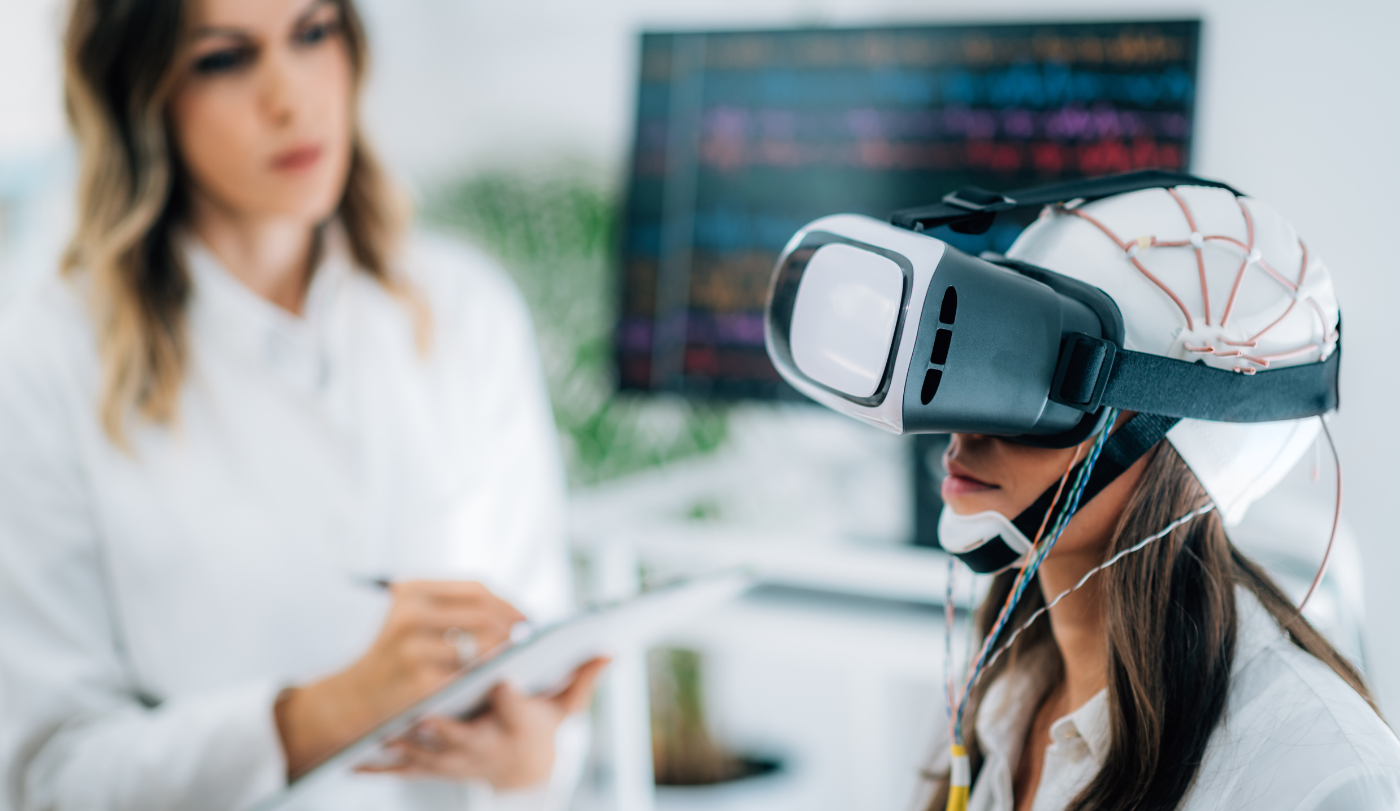Exploring the Possibilities:
VR's Role in Shaping the Future of Healthcare

Virtual Reality (VR) is making waves in the healthcare industry as it continues to revolutionize the way medical professionals approach patient care.
The impact of VR in the medical industry is becoming increasingly significant, as it helps medical professionals generate empathy by simulating real-world experiences for healthcare providers. As a VR development company, we are proud to be at the forefront of this groundbreaking technology, which is expected to play a significant role in the future of healthcare.
From training doctors to helping patients manage pain, the applications of VR are limitless. In this blog post, we'll explore 5 exciting ways VR is advancing the medical industry.
1. Revolutionizing Medical Training with VR
One of the most significant advancements in the medical industry is the use of VR in the industry's training process. Medical students can now train in a virtual environment, simulating surgeries and medical procedures to hone their skills. This method of training is cost-effective, safe, and allows students to gain valuable hands-on experience before they ever enter the operating room.
Bit Space helped SimWerx create an emergency medical scenario training platform that is geared towards creating an unparalleled training experience with the ability to:
- Empower Instructors to Rapidly Scale Accurate & Challenging Training
- Deploy & Enforce Command Intent Across Dispersed Teams
- Actionable Performance Analytics Quantify Operational Readiness
Below is their
Real X
Scenario Authoring
Simulation Management & Analytics Ecosystem.

2. VR allows for diverse care options in telemedicine
Patients receiving telemedicine can gain from virtual reality (VR) in a number of ways. A TIME article shows VR technology is rapidly being adopted to deliver telemedicine services, help with pain treatment, and train medical professionals worldwide.
Healthcare professionals can recreate real-world situations with VR, which will make learning more immersive and interesting. Moreover, virtual health care, such as virtual visits, can lessen expenses, travel time, and waiting room time.
Additionally, virtual visits might involve the patient's family, caretakers, or other medical experts who can add to the patient's diagnosis or treatment plan, enhancing collaboration and efficiency. VR technology can therefore be included into telemedicine to improve the overall standard of care and increase patient accessibility
3. Effective Pain Treatment in Healthcare with VR
Pain Management: Virtual reality is also being used to help patients manage pain. Patients who have suffered burn injuries or who undergo wound care can use VR to reduce severe pain. By immersing the patient in a virtual environment, they can forget about the pain and focus on something else, which can reduce their dependence on medication.
4.
PTSD patients may benefit from immersive technologies
Patients with mental health issues like PTSD, anxiety, and phobias are able to utilize VR to help treat their conditions. There are several methods that VR treatment is utilized to treat PTSD. Confronting the traumatic event that gave rise to the disorder is one of the most effective uses of VR therapy for PTSD. According to this article by Scientific American, It has been demonstrated that this approach is more effective than either standard talk therapy or medicine by itself.
Moreover, studies have demonstrated that VR exposure therapy is useful in treating phobias and other types of phobia-related anxiety. Because VR treatment can recreate the traumatic event, it can be effective in treating PTSD and anxiety disorders by enabling the patient to confront and process their feelings in a secure environment.
Overall, the use of VR therapy in the treatment of PTSD and other mental health issues has yielded encouraging outcomes.
5.
VR can speed up recovery times with Rehabilitation
VR technology is now used to help patients recover from strokes and other physical injuries. By immersing patients in a virtual environment, therapists can create exercises that simulate real-life scenarios. For example, patients who need to regain their balance can practice walking on a virtual tightrope or climb a virtual ladder to regain their strength.
In conclusion, virtual reality technology has transformed the medical industry in many ways, from training medical students to revolutionizing patient care. With so many advancements and potential applications, it's clear that VR will play a significant role in shaping the future of healthcare. By embracing this technology, the medical industry can provide more accessible, equitable, and efficient care to patients.
Click to share this article
Transform your business with immersive technologies
Schedule a consultation to see how BSD can help your organization unlock new avenues of engagement.
CONTACT US
Global Headquarters
1555 Dublin Avenue, R3E 3M8
Winnipeg, MB, Canada
PUBLIC RELATIONS
DIVISIONS
GENERAL
IN THE SPIRIT OF RECONCILIATION
We would like to acknowledge that the land on which we gather is Treaty One Territory, the home and traditional lands of the Anishinaabe (Ojibwe), Ininew (Cree), and Dakota peoples, and in the National Homeland of the Red River Métis. Our drinking water comes from Shoal Lake 40 First Nation.
Join 10,000+ people who get XR tips, insights, and company updates monthly.
Contact Us
We will get back to you as soon as possible.
Please try again later.
Privacy Policy Accessibility Sitemap Support
Bit Space Development Ltd.





